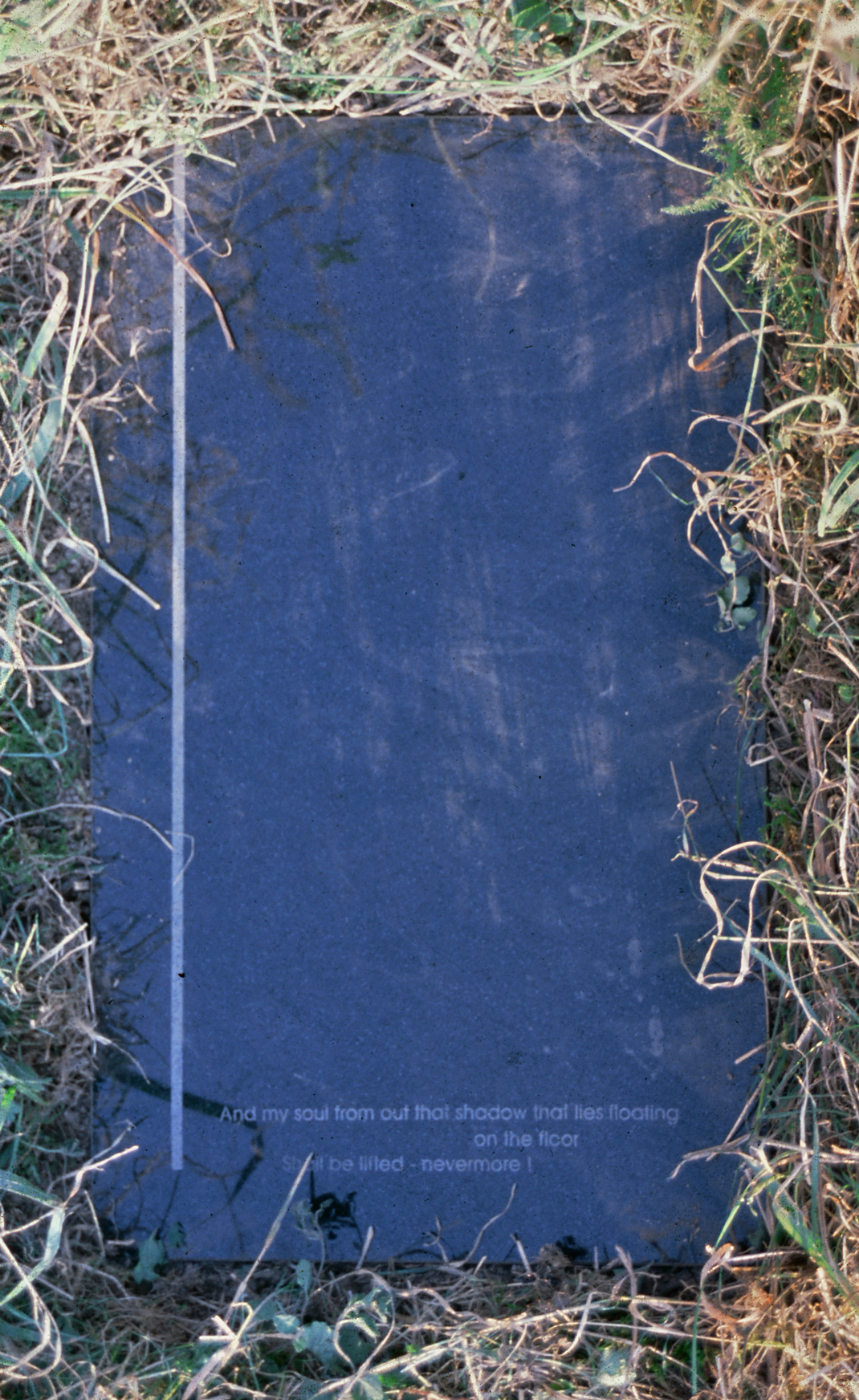Thomas Rauscher
The Raven
An installation based on a poem by Edgar Allen Poe
mixed media
1996
This installation marked my inaugural major project during my graduate studies. As a long-time admirer of Edgar Allan Poe’s work, I was drawn to his most celebrated poem, ‚The Raven‘. After considerable deliberation, I concluded that I needed to dissect the poem into distinct, logical sections to facilitate my analysis and subsequent translation into an installation. Edgar Allan Poe’s essay ‚The Philosophy of Composition,‘ which delves into the writing of the poem, proved invaluable in this endeavor.
As a preface – please forgive me the poor quality of the below images – due to age and having only low quality slides left the digitalized images are not of that quality I wish I could post here…
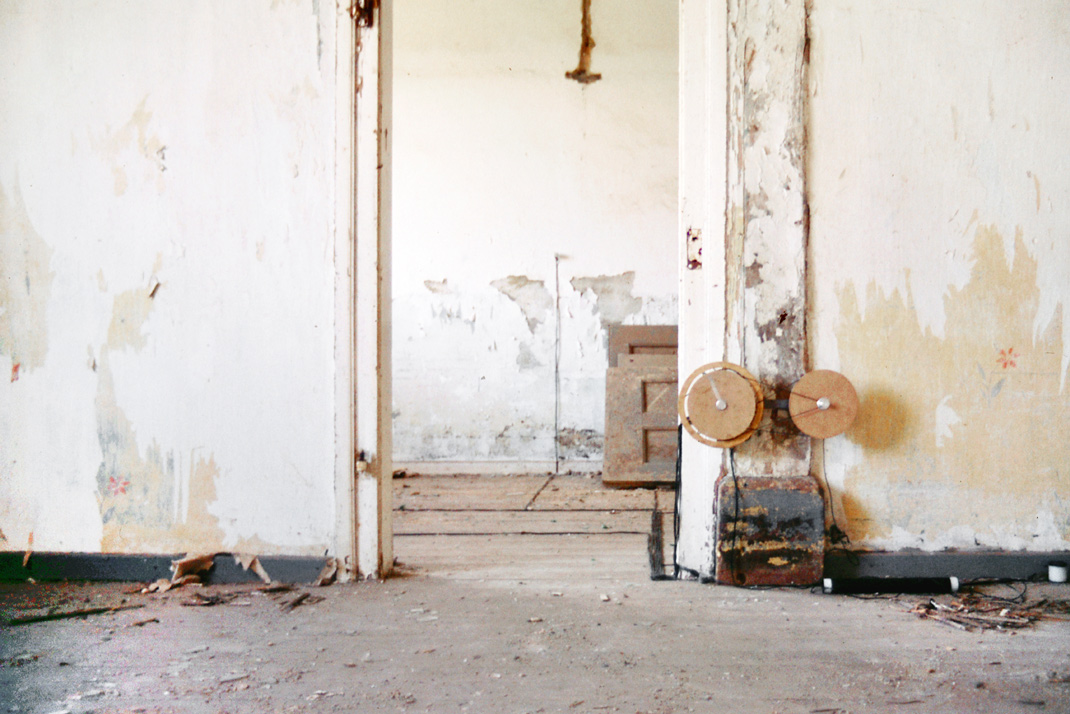
Through several iterations, I decided to divide the Raven’s 18 stanzas into four parts, each assigned a concise keyword:
Stanzas 1-6: The Knocking Stanzas 7-15: Memories Stanza 16: Sorrow Stanzas 17-18: Resignation
„The Knocking“ The initial six stanzas herald the Raven’s arrival, described by Poe as an unlocatable tapping. To represent this, I devised a timing mechanism that randomly activates six ‚knockers‘ mounted on the room’s various surfaces. Standing within the space, one is enveloped by an irregular cadence of knocks.
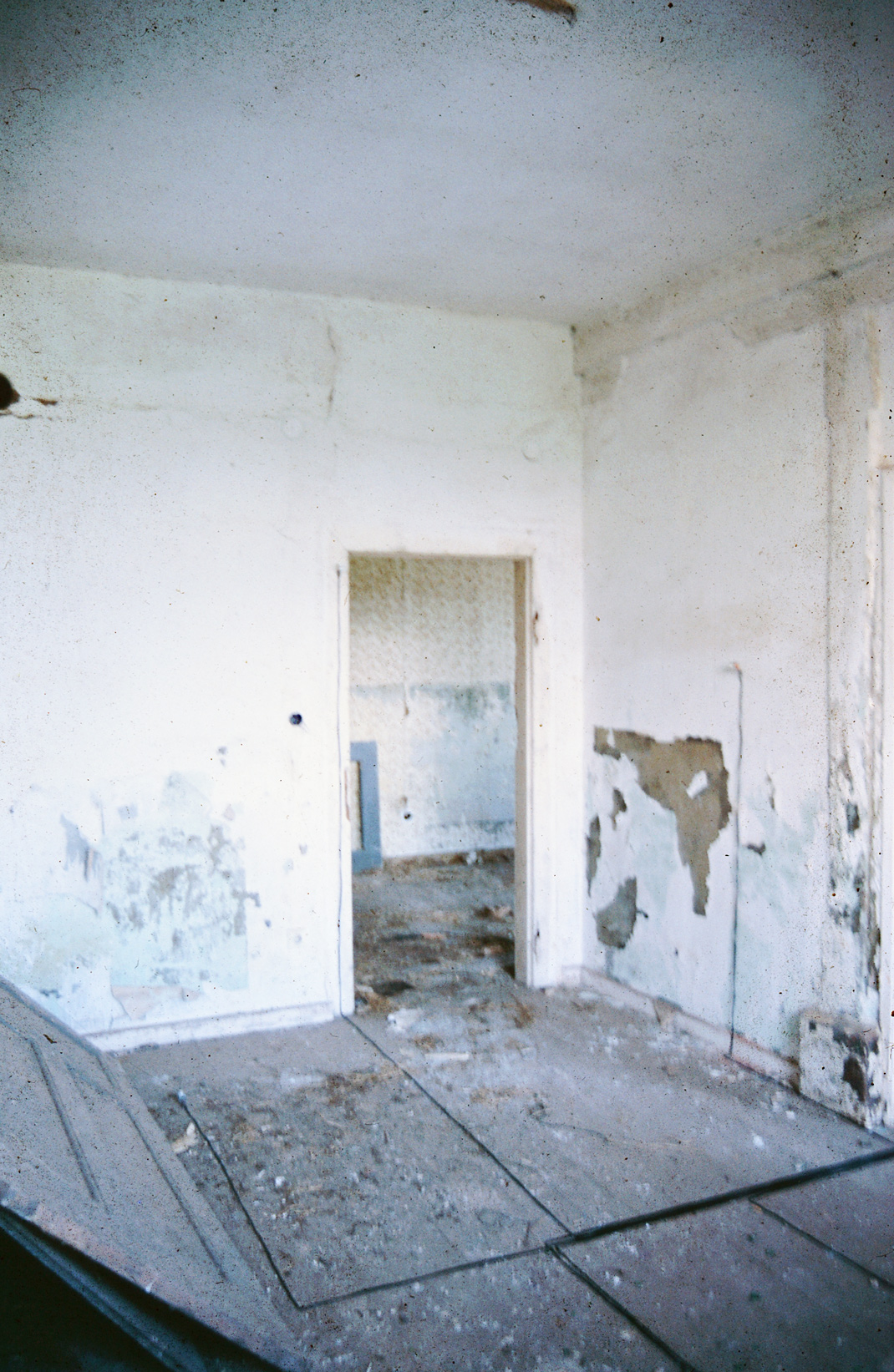
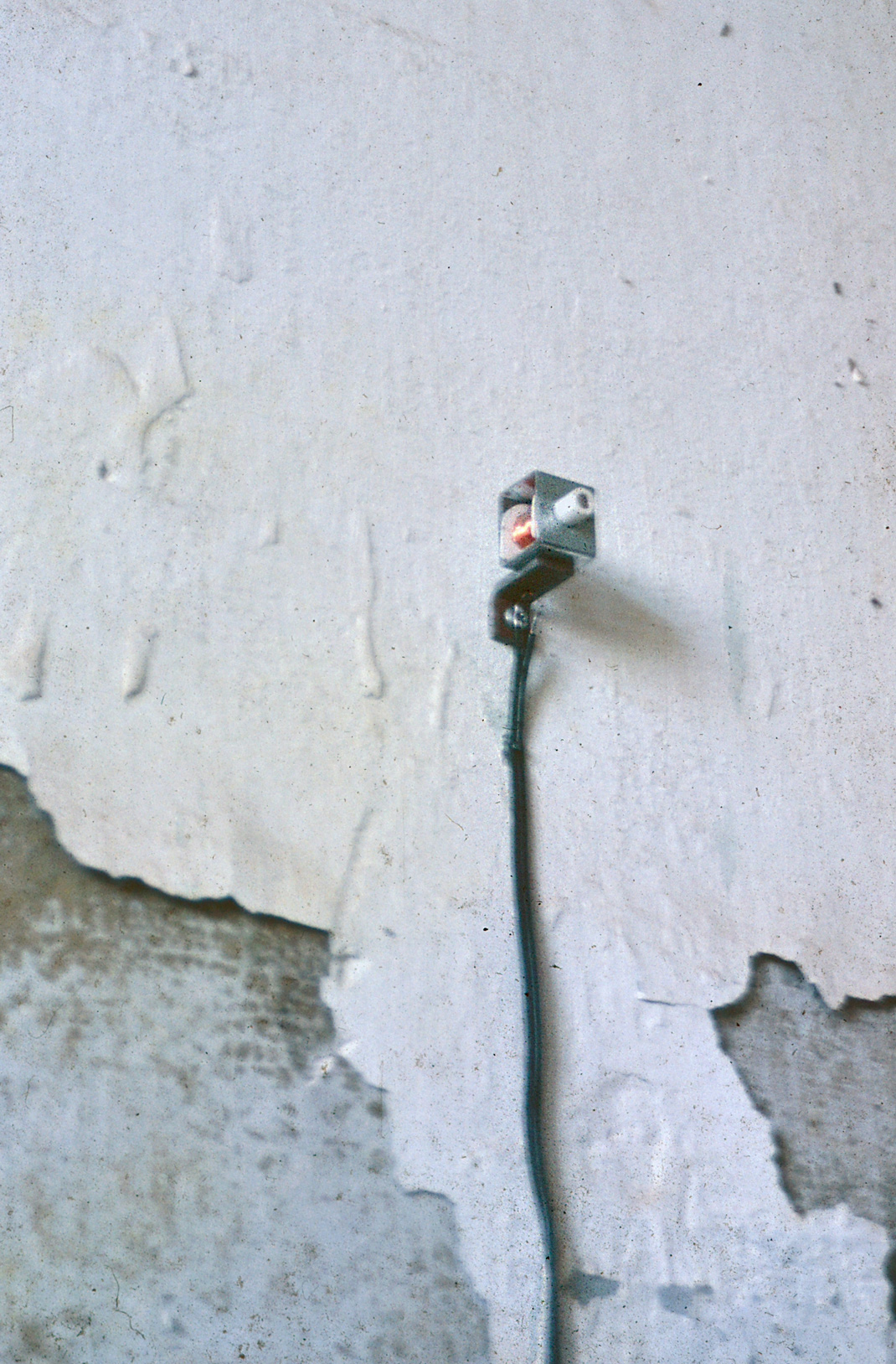
„Memories“ Poe evokes the memory of various beloveds. Given the fictional nature of the Raven’s addressee, I chose not to employ a generic period portrait but instead drew from Poe’s personal life – his wife Virginia, who died prematurely, leaving him deeply bereaved. I discovered an oval portrait of her in a book, which served as the foundation for an altar-like table. All lines of the table and the orientations of the objects placed upon it—image and candles—converge at a point six feet beneath the floor, symbolizing the depth of a grave.
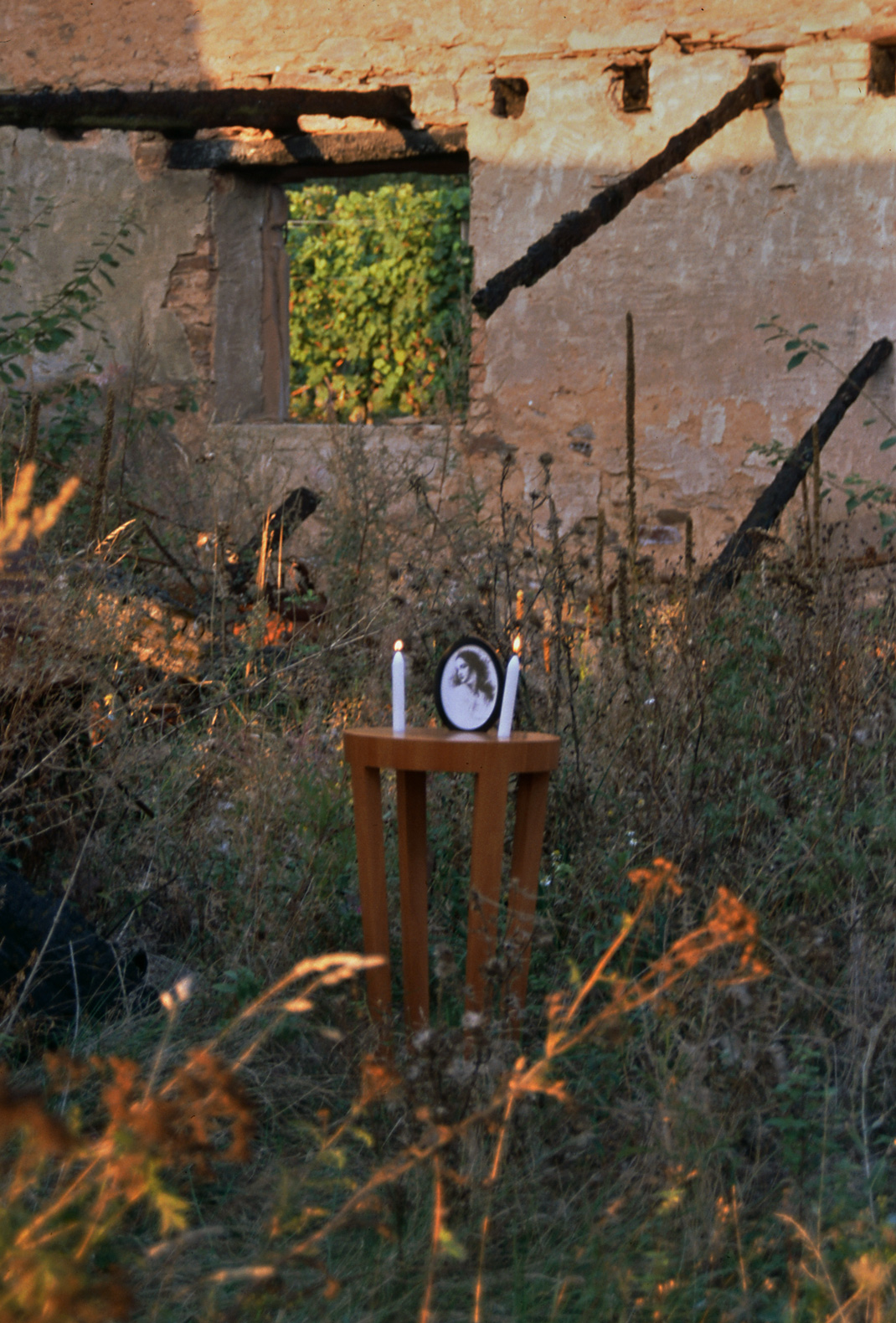
„Sorrow“ Weeping and tears are emblematic of sorrow. This is visualized through a vessel containing saltwater. As it evaporates in the sunlight, condensate accumulates on the inward-curving lid, then drips down, creating an eternal cycle.


„Resignation“ In these final stanzas, Poe conveys a profound sense of resignation, expressing that nothing will ever be the same. He signifies this through the description of a shadow cast upon his tombstone. Consequently, it seemed fitting to inscribe the poem’s final words on a gravestone.
